FREDONIA, COLOMBIA - The first thing you have to know about the people of this coffee-rich country is that “they don’t really like coffee.” At least that’s what a delightful man named Markus Jobi tells me as we make our way to this sleepy coffee town in Antioquia State.
“Chocolate, now that’s what Colombians really like. They especially love it hot with some cheese (a Colombian version of mozzarella) melted in it. Yum!” says Jobi, a German expat whose company, Palenque Tours, organizes day trips to this lush coffee growing region outside Medellín — a 90-minute drive away.
“But the real reason Colombians don’t like coffee is because the best of the crop is always shipped abroad and they are left with rejected beans,” advises Jobi as we exit the Pan-American Highway and start a kidney-rattling ride along a narrow, winding back road originally made for mules that leads to the secluded plantations.
Most of the coffee in Colombia — it’s was ranked third in 2015 behind Brazil and Vietnam in total production — is produced by large companies using modern technology. Small family-run coffee plantations remain but struggle to survive.
“There are 500,000 Colombian families who depend on coffee for their living,” says Jobi as the road dips into a yawning valley and a dramatic Garden of Eden backdrop appears in the windscreen.
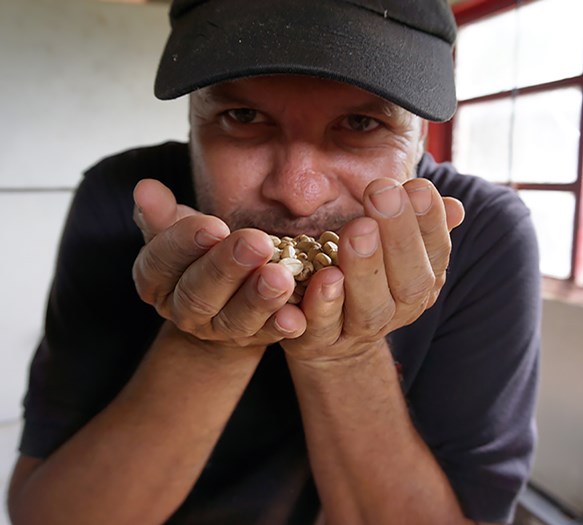
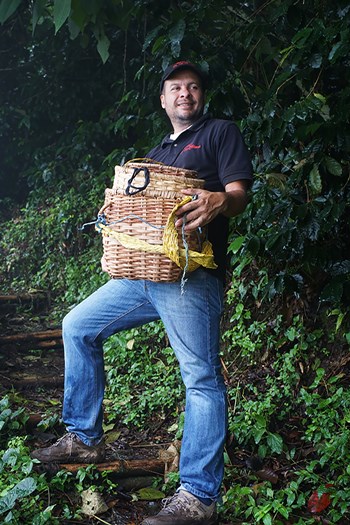
Left: Octavio Acevedo smells the coffee beans he grows. Right: Octavio heads out to pick coffee beans.
“The family farms are very small, maybe two of three hectares in size. And they each produce a relatively small amount of coffee. I helped start these coffee tours as a way of helping the family growers augment the little income they get from coffee,” says Jobi.
As our rollercoaster ride continues, some small family plantations begin to appear — their homes and precious crops cling to the side of deep slopes that are lush with vegetation.
“The coffee farms also grow bananas, mangos, plantains and bamboo, so in years when coffee prices dip they have other income,” says my guide as we reach the entrance to Café de la Cima, one of the coffee plantations that have opened their doors to tourists.
Markus rushes from the car and enthusiastically embraces Octavio Acevedo, a fifth-generation coffee grower and owner of Café de la Cima.
While the two men reconnect, I survey the breathtaking valley scenery surrounding Octavio’s small plantation and marvel at the majesty of the southern Andes off in the distance.
The beaming Octavio is the Juan Valdez of Fredonia. His family produces one of the best coffees in the valley and he’s proud to welcome foreigners to his quaint home that sits at the base of his plantation.
As we talk, Octavio’s mother, Rubella Pareja, appears carrying some local snacks and the obligatory cup of coffee, which she and an assistant have prepared in the family’s humble kitchen — as part of the tour, guests get a hearty lunch, which Rubella serves after Octavio shows you the process of taking the simple coffee bean and turning it into the world’s favourite drink.
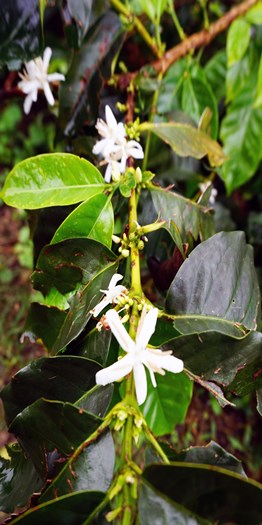
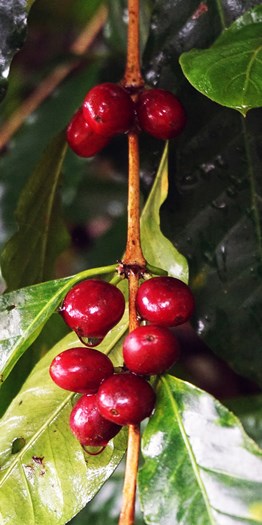
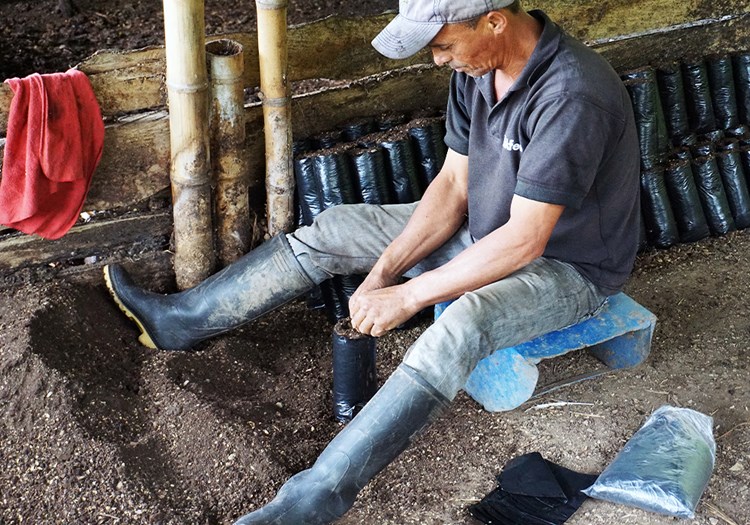
Left: Coffee starts out as a pretty white flower. Middle: When it turns red, the beans are ready to be picked. Right: A worker gets new plants ready for the field.
“You must be hungry after such a long trip from Medellín (pronounced Mede-jean here),” says the lovely Rubella, with Markus now acting as my interpreter.
There are over 1,000 municipalities in Colombia and half of them produce coffee. However, much of Colombia’s coffee harvest leaves without being roasted.
“The final roasting is done in Europe or North America. We grow and clean the coffee before it’s rated and shipped,” says Octavio.
Coffee is rated on a scale up to 100 and most of Colombia’s crop averages a very respectable 80. Octavio beams when I ask what rating his Café de la Cima brand gets? “An 85,” he proudly tells me.
“The best rating ever was the 100 given to a Panamanian plantation,” Markus interjects.
Octavio tells me the Spanish introduced the Arabica bean to Colombia when they began colonizing this South American beauty in the 15th century.
“The most popular coffee beans are the Robusta and the Arabica. The Robusta is heartier but the Arabica produces a better quality of coffee — sweeter and more aromatic — and we are legislated to only grow that one in Colombia,” says Octavio while breaking open a recently picked red bean and exposing the inner nut which is covered in a gooey substance.
“This is the honey that protects the bean. First we must subtract the honey from the inner bean before drying and cleaning them for export,” says the grower who also holds a degree as a computer engineer.
Octavio then grabs some wicker baskets and orders me to follow him up the steep slopes that jut up behind his home where the coffee plants grow. Because the plants need a lot of drainage, they prosper on the side of hills.
As we begin our uneven climb, I’m distracted by a man’s voice echoing off the hills. The voice is so clear I think the man is directly behind me.
“That’s my neighbour,” says Octavio. He’s over there, on the farm two kilometres away. Before telephones, this is the way farm families always communicated.”
Octavio’s farm sits 1,200 metres above sea level and all the picking is done by hand. “We have four employees on the farm and at harvest time over three million people are needed to pick the crop throughout Colombia,” says Octavio as we reach the first plants at 1,500 metres.
I’m gasping for breath.
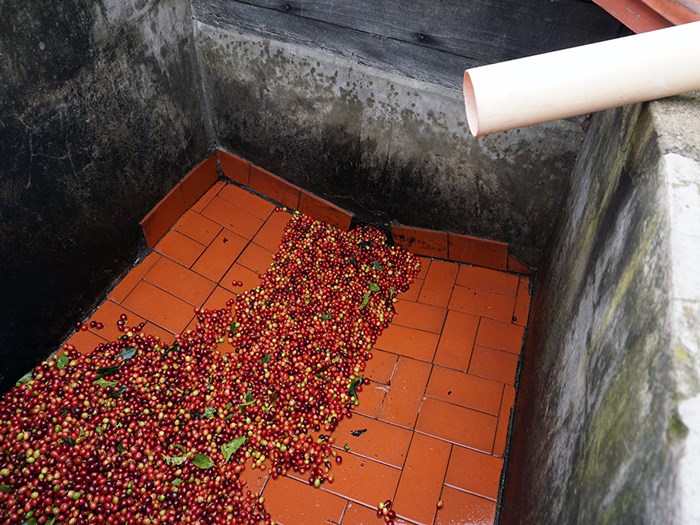
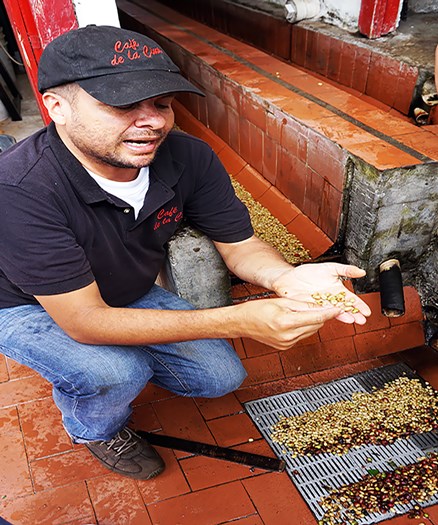
Left: Ripe beans are moved to the farm from the field by long tubes. Right: Octavio weeds out the imperfect beans.
While most of the plants are flush with fruit, some of the younger plants display white flowers.
“The flowers are very pretty — then comes the green beans that turn red, signalling it’s time for them to be picked,” says the grower, whose tiny two-hectare farm produces over two tonnes of coffee beans annually.
“It takes about 30 months for the plants to mature and a full three years before they produce fruit,” says Octavio, who points out the best quality coffee is produced at higher elevations.
“Follow me to the top,” he orders.
When we reach the highest point in his plantation, even the grower is gasping for breath now. Thankfully there’s a shelter where “we come to unload the baskets.”
At one time, the heavy baskets (they each can hold 10 kilograms of beans and they get filled between 10 and 20 times a day) had to be hauled to the bottom of the plantation. But “30 years ago my father invented this method of getting the beans to the bottom,” says Octavia pointing to an ingenious box where the baskets are emptied and water pushes them through a tube back to the farmhouse where they are cleaned.
Each basket fetches the equivalent of $2 (Cdn) — less than what a small Starbucks costs — and the pickers get about $25 a day during picking season, a good wage when you consider the average salary in this emerging country is less than $200 (U.S.) a month.
“I’ve never had a Starbucks. I’m tempted to try one when I go to Medellín but so far I’ve resisted,” smiles Octavia.
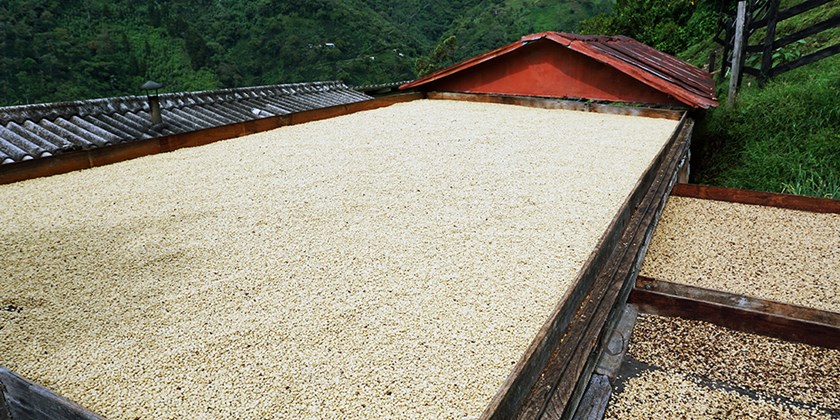
Above: The beans are dried in the sun.
When we return the farmhouse, Markus tells me the families get $65 of the $100 tourists each pay for the privilege of visiting the coffee plantations — a huge amount considering they make so little from their crops.
“I and other travel companies are helping them out and they help us by letting people see what’s involved in the process. Coffee, after all, is such a big part of Colombia’s culture,” says Markus.
Octavio shows me the final process of drying the beans and sacking them for export and then brings me to a “lab” where he roasts coffee to sell to the visitors or to use for the family's own consumption.
“More and more Colombian coffee growers are roasting the beans and we are getting some pushback from international companies for doing that. But if we can roast the beans ourselves, we can make more money, then we’ll be able to survive. Otherwise the future of the small coffee plantations (they now make a profit of $40 U.S. on each 120-kilogram bag) will be in jeopardy.”
As the car pulls away from the Café de la Cima plantation and Octavio’s waving hand becomes a blur, I tell Markus that I’ll appreciate my next cup of coffee a lot more thanks to this visit. <
Information
Copa Airlines, a Star Alliance partner and the Colombian airline leader in on-time performance and quality of service, offers flights to Medellin via Panama City from Toronto and Montreal. Copa's Business Class service is becoming one of our favourites and connections are excellent. The airline has a young fleet and services many Latin American destinations. www.copaair.com/en / Hotel Patio del Mundo is a great place to base yourself in Medellín. This chic little property offers 7 amazing rooms in one of the best areas of Medellin. It's owned by a lovely French expat named Agnes Garcia and she and her staff treat you like family. Rates in high season are just $150 a night with breakfast. www.patiodelmundo.com/en / For more information on Colombia, go to www.colombia.travel